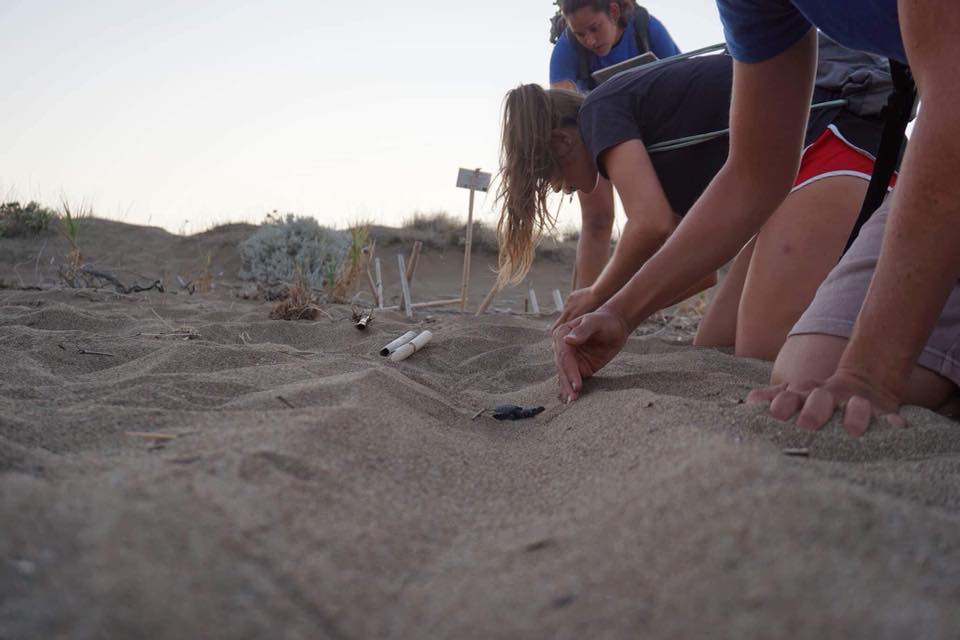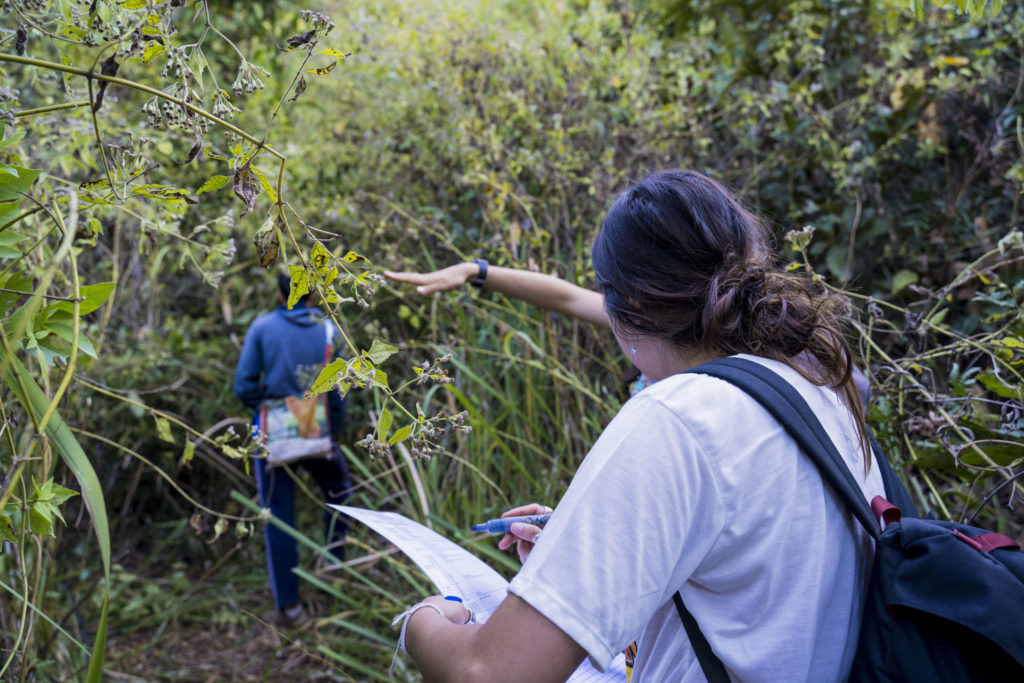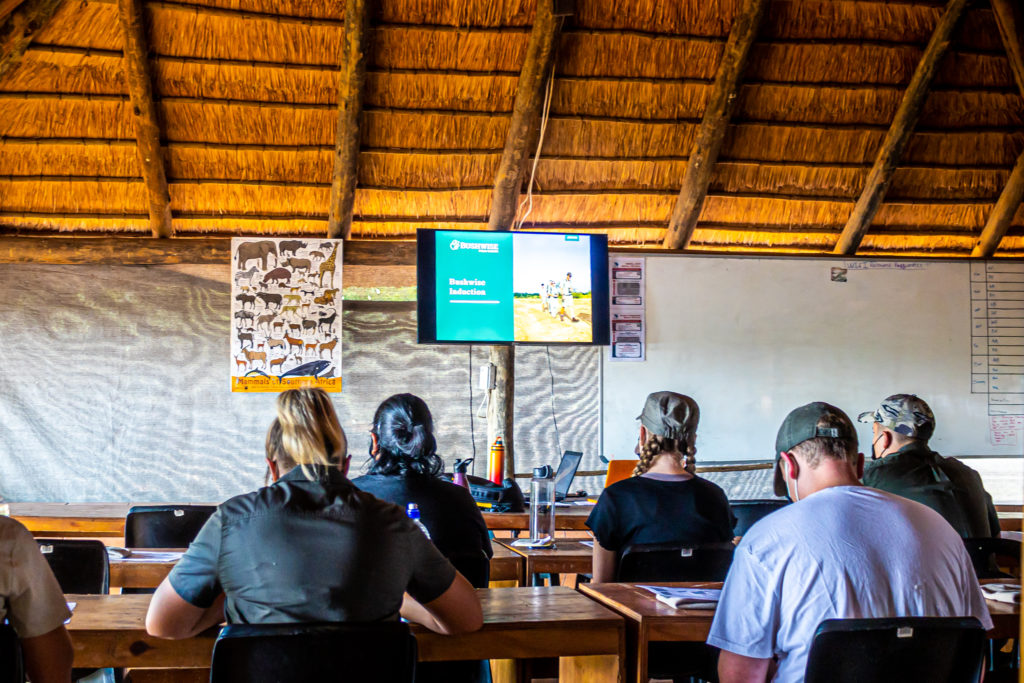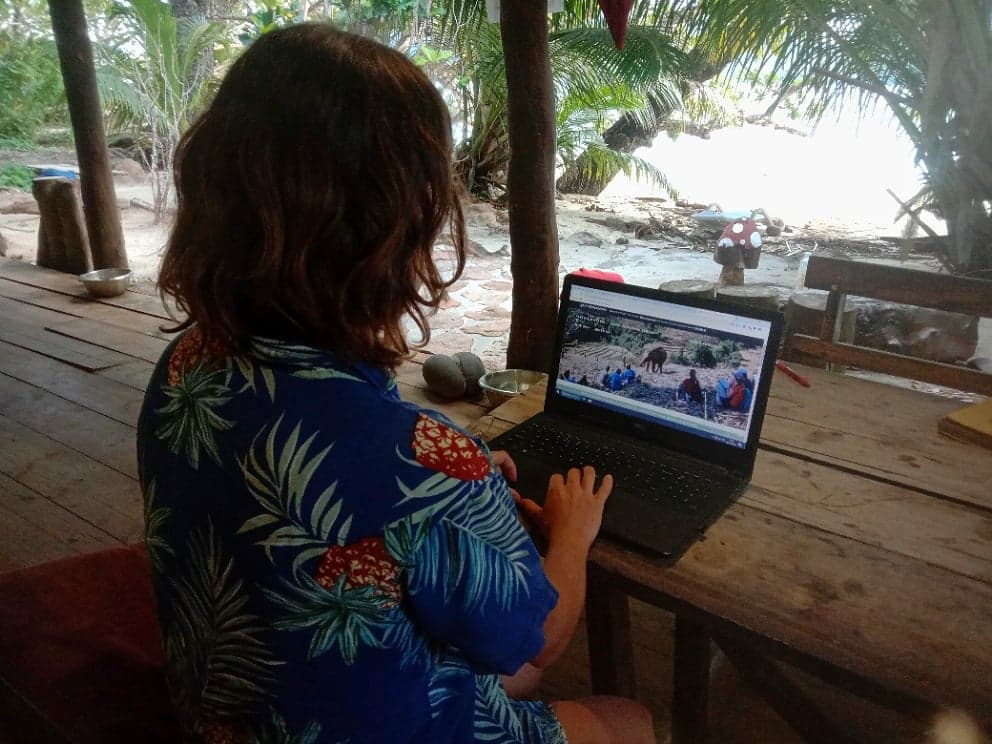Explore the different types of peccaries found in Costa Rica, as well as their importance in the local ecosystem, habitats, behavior, and social structure.
GVI
Posted: May 10, 2023

Petrina Darrah
Posted: April 20, 2022
All seven species of sea turtles are in serious decline. Dedicating yourself to protecting these incredible marine reptiles through a career working with sea turtles is incredibly rewarding — but where do you start?
Every conservation journey begins with a single step in the right direction. In the case of a career working with sea turtles, that might look like joining an environmental internship or volunteer program to gain invaluable hands-on experience. By participating in one of these programs, you could also expand your knowledge of conservation research and increase your professional network, which will come in handy when you are searching for a job in this very competitive industry.
The most important thing is to start. Here are some straightforward ways to begin building toward a career working with sea turtles.

GVI’s sea turtle research and protection internship program in Phang Nga is a unique opportunity to gain practical experience and take part in impactful initiatives.
This internship program is a rewarding way to develop your career prospects in the marine conservation field and learn how to work with sea turtles. By the end of the internship, you’ll be able to add a range of significant skills to your CV.
For example, as an intern, you’ll take part in a head start program focused on the development and behaviour of the turtles. You could be assisting with the rehabilitation, enrichment, medicating of the turtles, or carrying out behavioural studies.
Interns on this program make a real contribution to the green turtle populations in the area.
Three years ago, two turtles with broken fins arrived into the care of GVI’s Phang Nga team. Interns taking part in the sea turtle internship helped to care for the two tiny patients, applying medicine and safeguarding them. Finally, after years of care, both turtles were strong enough to be released back into the ocean. The Royal Navy invited some of GVI’s team to join their release, and extended a special thank you to everyone who had been involved in their rehabilitation.

A volunteer program is a meaningful way to gain practical experience for jobs working with sea turtles. Greece and Costa Rica are epicentres of sea turtle programs and beautiful countries, making them ideal destinations for budding sea turtle conservationists.
GVI offers sustainable volunteer programs in the Bay of Kyparissia – an area with rich coastal ecosystems, focused on the protection of loggerhead turtles – and Jalova – found in Tortuguero National Park, surrounded by protected rainforest and home to three turtle species, namely the green turtle, hawksbill and leatherback. In these dreamy locations, you’ll get to see the first ocean dash of turtle hatchlings, and spot adult turtles gliding through the turquoise waters off the coast.
All of GVI’s volunteer activities operate long-term and with the local community in mind. As part of the sea turtle volunteer or internship programs, you will learn how to work with sea turtles by participating in vital initiatives such as recording nesting activity and protecting nests from predators and occasional flooding.
You’ll receive training on the program to make sure you are fully equipped to meaningfully contribute to the project, giving you lasting skills you can apply to a career working with sea turtles.

There is a range of soft and hard skills to consider when exploring a career in marine conservation, which you can foster through a range of volunteer program options. You can learn about and assist with research on coral reefs, sharks, dolphins and whales, while still getting the necessary skills to pursue a career with turtles. You might be interested in checking out our programs in Belize, Seychelles, Canary Islands, Mexico and Fiji.
While these locations don’t offer sea turtle programs, you’ll still be able to learn the principles of locally-led conservation work, how to carry out research, and the role this has in protecting vulnerable wildlife. You’ll also experience working in a team towards a shared goal.
On top of this, you’ll experience what it’s like to live in a remote area. Being based next to the beach might sound like a dream – and sometimes it is – but the reality can often be quite different. You’ll be pushed outside of your comfort zone as you’re exposed to the elements, have to protect yourself against mosquitos, and work late-night shifts as turtles usually lay eggs at night. If you’re seriously considering a career working with sea turtles, it’s important for you to consider all the aspects of the kinds of environments you could be working in.

Jobs working with sea turtles can be hard to find, and highly competitive. However, once you have hands-on experience with sea turtle conservation through an internship or volunteer program, you can broaden your search and explore relevant job postings.
The types of jobs working with sea turtles you might see could include roles as a research assistant, survey technician, or program coordinator, as well as support roles such as fundraising coordinator or communications support.
Set up job alerts on your favourite job boards so you never miss a post.

Sometimes you have to tackle your dreams head-on. To tap into the world of careers working with sea turtles, you can proactively reach out to organisations to share your CV and indicate your interest in working with them. You can do this via LinkedIn, or check the careers and contact pages of the organisations you’re interested in working with.
Not all jobs and internships end up being listed online, especially when organisations are small and stretched for resources. So you never know — you could get in touch at the very moment someone in an office somewhere is wondering how they are going to find someone to fill a role.
You can also tap into your personal network. Knowing people within the conservation world is a huge bonus when it comes to careers working with sea turtles. Expanding your network is another invaluable takeaway from volunteer programs and internships. Knowing experts in the field can build your credibility. Plus, they can put you in touch with the right people. They might hear of potential vacancies before they are listed, so don’t be shy to check in with anyone you know working in sea turtle conservation.
Reaching out to people you know — or complete strangers — might sound daunting. But if you have taken part in an internship or volunteer program with GVI, you will have relevant skills and experience to talk about, and you will be able to show your understanding of conservation challenges and approaches. All GVI programs are focused on impact, support and career development, so you will have a thorough knowledge of local and global issues, and sustainable approaches to conservation.
Even if you don’t find a job working with sea turtles right away, reaching out to introduce yourself is an effective way to build your professional network and put your name out there.
Take the first step in your conservation career. Contact GVI to learn more about how to work with sea turtles through impactful volunteer programs and internships.
We understand that you may have questions about how COVID-19 will affect your travel plans. Visit our FAQs page which explains our latest safety protocols in response to COVID-19.
Disclaimer: The images in this article were taken pre-COVID-19.
By Petrina Darrah
Explore the different types of peccaries found in Costa Rica, as well as their importance in the local ecosystem, habitats, behavior, and social structure.
GVI
Posted: May 10, 2023